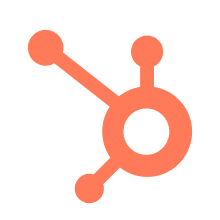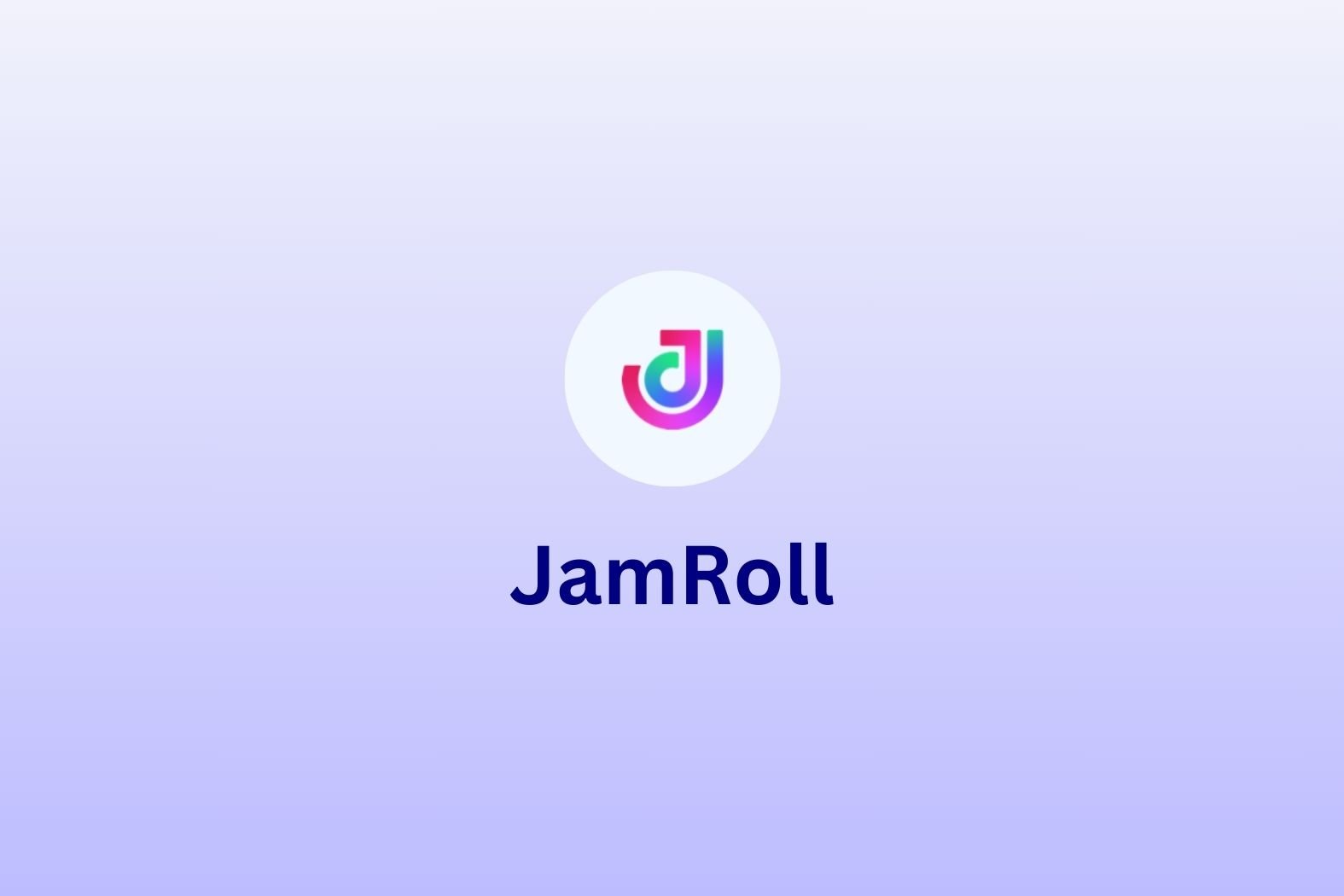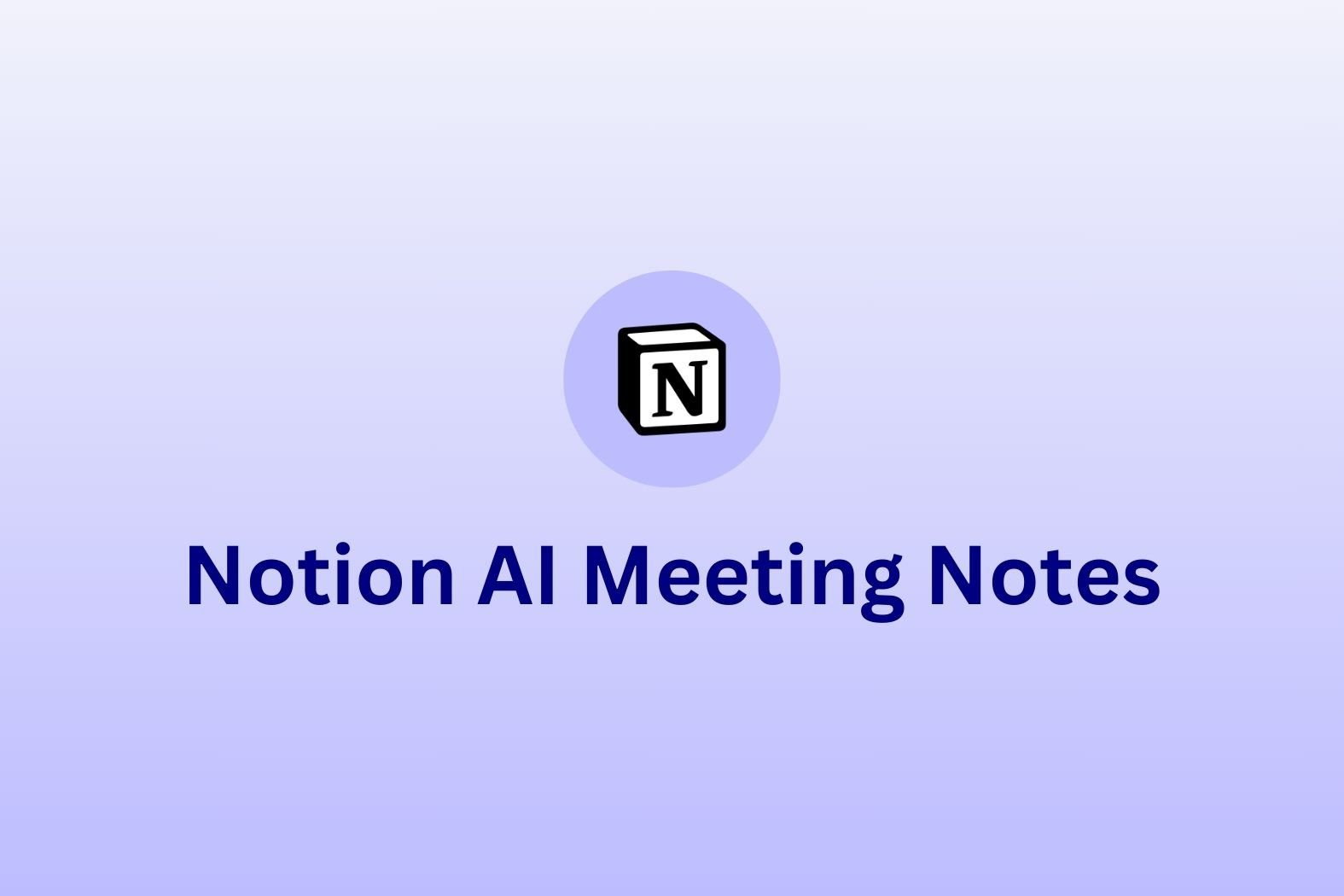Looking for a smarter way to analyze meetings, streamline transcription, and power up your sales or hiring calls with AI in Japan? While JamRoll is gaining traction for its sales-focused meeting insights, it’s far from the only player in the space. If you’re searching for JamRoll alternatives that offer better localization, broader use cases, or more flexible workflows, you’re in the right place.
In this guide, we’ll explore five standout tools that go beyond sales, tailored for Japanese teams in recruitment, organizational development, and cross-functional collaboration. Whether you need real-time Japanese transcription, multi-meeting analysis, or tighter integrations with tools like Dialpad and Slack, there’s an AI meeting assistant that fits your workflow.
Before we dive into Jamroll’s competitors, let’s take a look at Jamroll itself. We’ll break down the standout features and the hard-to-ignore limitations of Jamroll, and then explore why Japanese teams might be looking for alternatives.
What is Jamroll?
Jamroll is an AI-powered meeting intelligence platform designed to help sales teams analyze conversations, uncover insights, and close deals more effectively. With features like real-time transcription, automated summaries, and emotion analysis, Jamroll streamlines post-meeting workflows and gives managers a clear picture of what’s happening in customer calls.
By focusing heavily on sales-centric features, such as deal tracking and pipeline visibility, Jamroll helps teams coach reps more effectively. Revenue teams use it to identify trends in buyer behavior and improve win rates. One of the reasons it’s so popular is because it integrates with everyone’s favorite tools like Slack, Zoom, Google Meet, and Dialpad, causing minimal disruption to existing workflows.
Let’s take a closer look at what makes Jamroll unique—and where it may fall short, especially for teams outside of sales or those needing deeper localization. We’ll cover:
- What makes Jamroll stand out? (key features)
- What are the drawbacks of Jamroll?
- Why are Japanese teams looking for Jamroll alternatives?
What Makes Jamroll Stand Out? (Key Features)

Jamroll sets itself apart from other transcription tools by focusing deeply on sales conversations. Its strength lies in transforming raw conversations into structured, actionable insights that sales teams can use to coach, forecast, and close deals faster.
While some tools aim to be general-purpose, Jamroll leans into sales intelligence, combining conversation analysis, emotion detection, and pipeline tracking into a single, sales-first platform. With the Japanese speech analytics market poised to grow 13.7% year on year from 2025 to 2033, Jamroll is setting itself up to take the lion’s share of the market.
Let’s explore the core features that define Jamroll’s value proposition:
- Sales insight engine
- Jamroll Deal: sales pipeline integration
- Emotion and sentiment analysis
- Designed specifically for sales teams
1. Sales Insight Engine
At the heart of Jamroll is its AI-powered sales insight engine. This doesn’t just transcribe calls, it analyzes them to understand what’s really happening in a conversation. It detects and flags key sales moments, like pricing discussions, objections, competitor mentions, or decision-maker cues.
Instead of listening to full recordings, sales managers can jump directly to these moments, saving time and improving coaching quality. For sales reps, this means clearer feedback on performance and a better understanding of what’s moving the needle with prospects.
Jamroll’s insight tagging helps teams:
Identify what’s working in winning calls
Create training libraries from real conversations
Ensure consistency across reps and regions
This feature is especially valuable in high-volume sales orgs where time is limited but insight is critical.
2. Jamroll Deal: Sales Pipeline Integration
One of Jamroll’s most strategic features is its “Jamroll Deal” view, which connects individual sales calls to deals in your pipeline. This gives managers a call-centric lens on sales progress, allowing them to:
Track which calls relate to which deals
Spot risk factors based on sentiment or missed next steps
Forecast deal outcomes based on actual conversations, not just CRM notes
This integration helps bridge the gap between conversational data and pipeline visibility. For teams using Dialpad or CRMs, it can create a more holistic view of sales activity, making 1:1s and pipeline reviews more grounded in reality.
It’s a huge timesaver and improves data-driven decision making, especially in enterprise or mid-market sales orgs.
3. Emotion and Sentiment Analysis
Jamroll uses emotion and sentiment detection to reveal the emotional tone of meetings. This quasi-futuristic feature helps users identify when a buyer is engaged, hesitant, frustrated, or skeptical: invaluable data for a sales rep. This allows teams to:
Tailor follow-up strategies
Understand why a deal may be stalling
Flag emotionally-charged conversations for review
Sales is emotional, and this feature adds much-needed color to otherwise dry transcriptions. For managers, it’s also a coaching tool, helping reps become more attuned to tone, pacing, and client mood.
Although Jamroll’s sentiment analysis capabilities aren’t as advanced as some pure NLP platforms, they’re highly tuned for sales scenarios, making them more practical and targeted.
4. Designed Specifically for Sales Teams
Perhaps the biggest differentiator? Jamroll isn’t trying to be everything to everyone.
Its narrow focus on B2B sales allows it to deliver sharper, more relevant insights compared to broader platforms. From terminology to tagging logic, Jamroll is optimized for:
Pipeline progression
Buyer journey tracking
Objection handling
Sales coaching
While other tools try to straddle multiple use cases, Jamroll doubles down on making sales conversations more measurable and repeatable.
This makes it a strong fit for Japanese companies in industries like SaaS, finance, or consulting, where verbal communication, persuasion, and client engagement are central to closing deals. It also means you can rest assured that new features will be tailored towards your sales-specific needs.
What Are the Drawbacks of Jamroll?
While Jamroll has quickly gained popularity among sales teams in Japan, it’s not without its limitations. In fact, it has some pretty big ones, especially if you’re stacking it up against more flexible or locally-optimized tools (which we are!).
From integration gaps to customization constraints, Jamroll may fall short for companies looking to scale AI meeting intelligence across diverse teams, languages, and workflows. Here’s a high-level overview of the main drawbacks to consider before committing:
- Sales-first design limits broader use
- Limited AI customization
- No multi-meeting or cross-team analysis
- Weak integration ecosystem
- Unclear or enterprise-only pricing
1. Sales-First Design Limits Broader Use
Jamroll was built for sales—and it shows. While its deal tracking and sentiment analysis features shine in revenue environments, they’re less effective for recruiters, HR teams, or internal project reviews.
Unlike some competitors that offer workflow templates or adaptive summaries tailored for different departments, Jamroll tends to funnel all usage into a sales-focused paradigm. This makes it a much weaker offering for businesses that want a single AI meeting assistant that can be used across their whole business.
In reality, Jamroll’s features—while promising—simply don’t cut it. They’re not good enough to compete with high-end sales platforms, and not broad enough to compete with all-rounders.
2. Limited AI Customization
One of Jamroll’s biggest bottlenecks is the lack of fine-tuning available in its AI summaries and analyses. Users can’t customize what’s prioritized in meeting notes or summaries based on role, department, or business objective. That rigidity may lead to lower relevancy for non-sales roles, or for teams who want more nuanced insight extraction.
When compared side-by-side with tools that do offer customizable meeting note templates, the difference is staggering. Customization allows businesses to personalize workflows and tailor them to specific needs, and without it, they’re shoehorning everybody into the same boat. Jamroll drops the ball here.
3. No Multi-Meeting or Cross-Team Analysis
Jamroll’s analytics are tied to individual calls, without the ability to group insights across multiple meetings. The AI’s lack of multi-meeting memory and context proves to be a hindrance when comparing it to Jamroll alternatives that have this feature. Where alternatives identify patterns and trends across multiple calls at once, Jamroll provides limited, single-meeting insights with no memory of previous calls.
If your organization is trying to track long-term patterns—like how objections evolve across sales cycles, then Jamroll won’t be of much use. Some alternatives like tl;dv or Amptalk allow rollup reports and trend dashboards across teams and departments which would be much more suitable.
4. Weak Integration Ecosystem
Compared to Jamroll alternatives like tl;dv or Fireflies, which offer dozens of native integrations and thousands more via Zapier, Jamroll’s integration list is surprisingly short. Officially, it only supports Zoom, Slack, and Google Meet.
This narrow ecosystem can be a deal-breaker for teams using CRM systems, task organization tools, or other video conferencing platforms like MS Teams. Competitors often offer broader API access, webhook support, or plug-and-play compatibility with tools like Notion, Salesforce, HubSpot, and more.
5. Unclear or Enterprise-Only Pricing
Jamroll’s pricing is not publicly listed, making it harder for SMBs or startups to gauge affordability. This can create friction for smaller teams who want to play with conversational intelligence without long-winded onboarding processes.
Many Jamroll competitors—such as tl;dv and Fireflies—offer transparent pricing tiers or even free plans to get started. Jamroll’s paywall is immediate, yet unclear, making it a rather frustrating tool to get started with.
Why Are Japanese Teams Looking for Alternatives to Jamroll?
Jamroll is a Japan-born platform designed with sales teams in mind, offering strong native-language support, emotion analysis, and pipeline insights. It’s a solid option for many companies operating in Japanese markets.
That said, even locally developed tools aren’t always one-size-fits-all—and many organizations are actively exploring Jamroll alternatives to meet more diverse or specialized needs.
Here’s why:
- Need for cross-department use cases
- Custom workflows and team-level controls
- More transparent pricing models
- Richer integrations or public documentation
- Multi-meeting or team-wide insights
Need for Cross-Department Use Cases
While Jamroll excels in sales enablement, its feature set is primarily geared toward that function. Japanese companies with hiring, training, or internal review needs may find it lacks the flexibility needed to support broader cross-functional workflows.
Nobody wants to have a different AI meeting assistant for each area of an organization. Yet, if you opt for Jamroll to improve your sales processes, that’s exactly what you’ll need to do.
Custom Workflows and Team-Level Controls
Some teams are looking for tools that offer deeper customization of workflows, such as tailored meeting templates. For companies with layered decision-making structures or regulatory requirements, alternatives with granular admin controls may be better suited.
For example, tl;dv allows administrators control over all their team’s recordings, including the ability to auto-record their team members’ calls, auto-share those same calls, and even prevent team members from deleting call recordings. These types of admin controls give teams more control and flexibility over their meetings library. Jamroll has nothing to show for itself in comparison, turning teams away left, right, and center.
More Transparent Pricing Models
If you’re about to commit to a tool, you want to know how much it costs without jumping through hoops. When the big enterprise-grade tools gatekeep their pricing, it’s understandable. They have a large user base, a massive presence, and features that can be researched in advance.
Jamroll, on the other hand, is without pricing, but information and reviews are thin on the ground. Other platforms offer free tiers, transparent pricing pages, or usage-based models—making it more likely that budget-conscious teams will go through the effort of signing up.
Richer Integrations or Public Documentation
Some businesses want full visibility into what tools they can connect with. Jamroll does mention integration with major services like Slack and Zoom, but detailed documentation—especially for local systems like Japanese CRMs or telephony platforms—isn’t always easy to find. In contrast, some competitors provide clearer and more extensive integration libraries.
Multi-Meeting or Team-Wide Insights
Jamroll focuses on analyzing individual conversations, which works well in 1:1 sales. However, companies aiming for team-level learning, trend tracking, or internal training initiatives might prefer platforms that support multi-meeting summaries, shared insights, and broader analytics across many users.
Japanese and global teams alike are flocking to tools with more advanced features, particularly those with meeting memory. This allows AI to analyze calls with context. It remembers all your calls and gets smarter the more it transcribes. Jamroll’s AI isn’t strong enough to keep businesses around.
Comparison Table: Jamroll vs Competitors
To help you quickly assess the best fit for your team, we’ve compared Jamroll against leading alternatives across key criteria—from Japanese transcription accuracy to pricing transparency and integration support. Whether you’re in sales, hiring, or internal operations, this table highlights where each tool shines—and where it might fall short.
Comparison Key:
✅ = Fully supported or strong performance
⚠️ = Partial or limited functionality compared to others
❌ = Not supported or significantly lacking
⭐ Best-in-Class = Leading feature performance compared to the competition
| Feature / Tool | Jamroll | tl;dv | Notta | Amptalk | Fireflies | Clova Note |
|---|---|---|---|---|---|---|
| Japanese Transcription Accuracy | ✅ | ⚠️ | ⭐ Best-in-Class | ✅ | ⚠️ | ✅ |
| Sales Enablement Features | ⭐ Best-in-Class | ✅ | ❌ | ✅ | ⚠️ | ⚠️ |
| Hiring & Interview Workflows | ⚠️ | ⭐ Best-in-Class | ✅ | ❌ | ✅ | ⚠️ |
| Emotion / Sentiment Analysis | ✅ | ❌ (due to compliance with the EU AI Act) | ⚠️ | ⭐ Best-in-Class | ✅ | ❌ |
| Multi-Meeting Summarization / Search | ❌ | ⭐ Best-in-Class | ✅ | ⚠️ | ⚠️ | ⚠️ |
| Japanese Localization / UI | ✅ | ✅ | ⭐ Best-in-Class | ✅ | ⚠️ | ✅ |
| Pricing Transparency / Free Plan | ❌ | ⭐ Best-in-Class (unlimited recordings, transcriptions, and summaries for free) | ✅ | ❌ | ✅ | ✅ |
| Third-Party Integrations | ⚠️ | ⭐ Best-in-Class (5,000+ integrations) | ✅ | ⚠️ | ✅ | ⚠️ |
| Custom Workflows & Admin Control | ⚠️ | ⭐ Best-in-Class | ⚠️ | ⚠️ | ✅ | ⚠️ |
| Mobile App | ❌ | ❌ | ✅ | ❌ | ✅ | ⭐ Best-in-Class |
5 Jamroll Alternatives for Better Conversational Intelligence in Japan
While Jamroll provides a solid set up for sales teams, its limitations can make it less ideal for some businesses, especially those with unique workflows or broader use cases. Thankfully, there are several Jamroll alternatives on the market that cater specifically to Japanese teams, offering more customization, better NLP support, and improved integration with local tools.
In this section, we’ll explore five standout competitors that can help your team streamline meetings, improve sales performance, and foster better collaboration across departments. We’ll cover:
- tl;dv
- Notta
- Amptalk
- Fireflies
- Clova Note
Let’s dive into what each platform brings to the table and how they compare to Jamroll.
1. tl;dv — Best for Team Collaboration & Cross-Department Use
tl;dv is a powerful tool designed to enhance team collaboration, especially in cross-departmental settings. While it has several specialist sales features, like AI objection handling tips, a speaker analytics dashboard, AI scorecards, and a variety of customizable sales playbooks, tl;dv isn’t solely for sales teams.
Unlike Jamroll, which is only focused on sales, tl;dv offers a broader suite of features that make it ideal for a wide range of use cases, including recruitment, human resources, onboarding, and internal knowledge-sharing. This makes it a strong Jamroll alternative, particularly for teams looking for versatility in managing meetings across various departments.
Why tl;dv is a Great Alternative for Japanese Sales Teams
One of the standout features of tl;dv is its custom AI summaries, which allow teams to tailor the platform’s AI-generated meeting notes to their specific needs. This can save time, ensure that key takeaways are prioritized, and help team members stay aligned on action items. In addition to AI summaries, tl;dv excels at enabling team-based workflows. With the ability to assign tasks, set reminders, and track progress, teams can seamlessly manage post-meeting actions.
tl;dv also shines in its CRM integrations, particularly with popular platforms like HubSpot, Salesforce, and Pipedrive. This ensures that your sales data and CRM updates are closely tied to your meeting insights, enabling better-informed decision-making. For sales teams using these CRMs, this integration can streamline workflows and eliminate the need for manual data entry, saving 32% of reps more than one hour per day and reducing human error.
Sales managers will also have a whale of a time with tl;dv. They can schedule recurring reports that cover all their reps’ sales calls across any given period. Set filters, assign templates, and exclude calls or participants you don’t want in the report, and away you go. Automated reports direct to your inbox at a time that suits you best.
What Are tl;dv’s Standout Features?
tl;dv has so many standout features that it would be unfair on the other alternatives to list them all. Here are some of the most important ways that tl;dv helps Japanese teams that want to switch from Jamroll:
Great Japanese Localization: tl;dv provides strong localization for Japanese teams, with high-quality transcription and accurate meeting summaries in Japanese (and 40+ other languages). This is particularly important for businesses in Japan that require a tool that understands both the language and the cultural nuances of their interactions.
Customizable Workflows: tl;dv’s focus on custom AI summaries and team-specific workflows allows businesses to adapt the tool to their unique needs. Whether you’re tracking sales calls, managing recruitment interviews, or onboarding new employees, tl;dv offers flexibility across various use cases. You can update your CRM automatically and tl;dv is now even available with MCP capabilities, making it an industry-leader when it comes to AI advancements.
Multi-Meeting Summaries: One of tl;dv’s strongest advantages over Jamroll is its ability to generate multi-meeting reports. This feature is ideal for sales teams and organizations that conduct frequent meetings and want to identify insights that span across them all. tl;dv makes it easy to track trends and insights across multiple conversations, rather than having to review each meeting in isolation.
- Incredible Free Plan: tl;dv provides unlimited call recordings, transcriptions, and AI summaries for free, as well as more advanced features in a limited form. This powerful plan gives users unrestricted access to the core features, letting them get used to the platform before having to commit to a paid subscription, unlike Jamroll that wants users to pay up front and test it later.
Jamroll vs tl;dv: Which Tool is Better for Conversational Insights in Japanese?
While Jamroll offers native Japanese transcription, tl;dv’s powerful localization qualities make it a strong competitor. Everyone knows that German companies are built with premium quality in mind, and AI meeting assistants are no different. It offers a localized platform in 7 languages, including English, German, Portuguese, and of course, Japanese. However, its translation capabilities go far beyond that, empowering teams to transcribe calls from all over the world in over 40 languages. By comparison, Jamroll is Japanese only, making it a non-starter for large international teams.
Another thing about Jamroll is that it’s so focused on sales that it forgets to be useful elsewhere. tl;dv, however, holds utility across the board. Even its recurring report feature, which is excellent for sales managers, can be used in customer success to track specific complaints or competitor mentions, in hiring and interview environments to track standout candidates, and in product development to track bugs or new feature updates.
Jamroll excels when it comes to revenue intelligence. Its deal dashboard allows teams to forecast revenue and identify at-risk deals. tl;dv doesn’t compete here, so if this is vital for your team, Jamroll might be the more reasonable choice. However, in consideration of multi-meeting memory, automated workflows, and state-of-the-art sales coaching, tl;dv stands head and shoulders above Jamroll, which is why we placed it as the number one Jamroll alternative.
2. Notta — Best for Real-Time Japanese Transcription
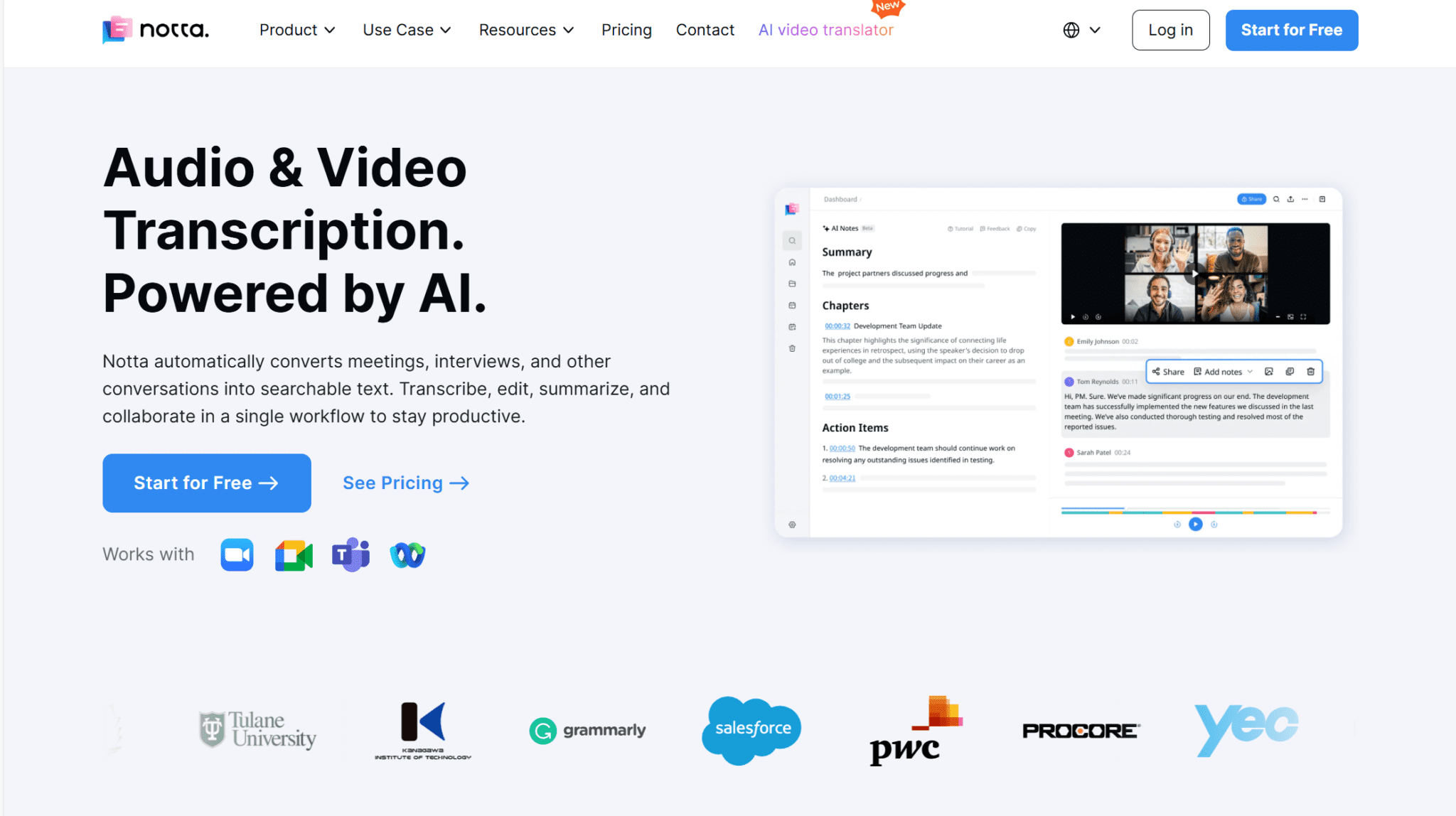
Notta is a well-known Japan-based AI meeting assistant that excels in real-time transcription, making it a compelling alternative to Jamroll for teams that prioritize speed, accuracy, and mobility. While it may not offer the depth of deal-tracking features found in sales-focused platforms like Jamroll, Notta makes up for it with exceptional speech recognition technology, a streamlined interface, and superior Japanese transcription accuracy.
Whether you’re taking notes in a sales call, documenting an internal strategy meeting, or capturing conversations on the go, Notta shines in its core mission: transcribing audio into organized, actionable notes instantly.
Why Notta is a Great Alternative for Japanese Sales Teams
Japanese transcription is Notta’s superpower. Built with strong localization and incredibly accurate speech recognition algorithms trained on native Japanese language datasets, Notta can recognize and convert real-time speech with precision. This makes it especially useful for fast-paced environments where note-taking must happen in the moment — including high-stakes client meetings or pressurized internal syncs.
For field sales reps, Notta’s mobile app is a must-have tool. With its offline access and real-time dictation, reps can document client interactions from taxis, trains, or wherever their meetings take them. It also includes a variety of meeting minute templates, making it easy to standardize and share summaries right after calls without needing a desktop or additional formatting.
In industries like real estate, finance, and manufacturing — where face-to-face or hybrid sales are still the norm in Japan — Notta brings agility to teams that can’t always rely on desktop-based solutions like Jamroll.
What Are Notta’s Standout Features?
While not the best tool internationally, Notta is at home in the Japanese market. Here are the standout capabilities that make Notta a strong Jamroll alternative for Japanese teams:
Best-in-Class Japanese Transcription: Notta outperforms many global competitors when it comes to Japanese speech recognition. It understands conversational phrasing, intonation, and business language nuances that can throw off generic AI models.
Real-Time Speech Recognition: Unlike many AI notetakers that deliver post-call transcripts, Notta transcribes conversations as they happen, ideal for live feedback or situations where follow-up speed matters.
Mobile-Friendly: Notta’s lightweight mobile app allows you to record, transcribe, and review conversations on the go. This gives it a major edge over tools like Jamroll that are primarily designed for desktop users.
Affordable Public Pricing: Notta’s pricing is transparent and accessible, making it a better choice straight off the bat than Jamroll. It’s great for individuals or small teams looking to scale without committing to high enterprise-level costs up front.
Meeting Minute Templates: For teams that value organization and structure, Notta’s preset templates help standardize how insights are recorded and shared across your team.
Jamroll vs Notta: Which Tool is Better for Conversational Intelligence in Japanese?
Notta and Jamroll serve two very different purposes, but there is definite overlap — and in that overlap, Notta often shines brighter.
Jamroll is built for revenue intelligence. It gives sales leaders a clear overview of pipeline performance, at-risk deals, and coaching opportunities. With features like emotion tracking, deal coaching, and rep scorecards, Jamroll is hard to beat if sales forecasting and accountability are your top priorities.
Notta, however, excels in speed, agility, and accessibility. Its real-time transcription is quite possibly the best you’re going to get in Japanese. And it has something Jamroll doesn’t even attempt: on-device flexibility with a refined mobile experience.
While Jamroll’s pricing is enterprise-focused and requires a paid commitment to access any of its core features, Notta’s provides transparent pricing and even comes with a free plan. While this free plan is far from great (3 minutes of transcription per call is just about enough time to get everybody’s take on the day’s weather), it at least lets you get somewhat familiar with the platform. It’s certainly better for smaller teams, startups, and individuals looking to get value right away.
3. Amptalk — Best for Sales Enablement in Japan
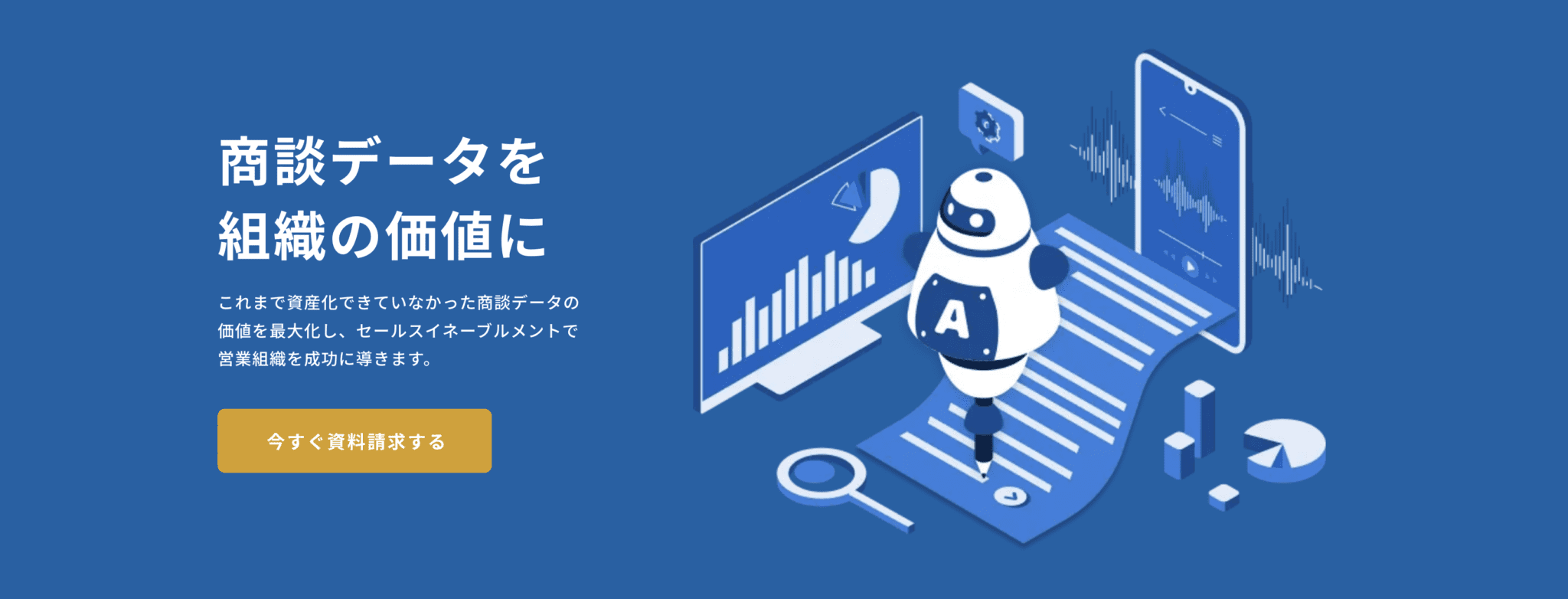
Amptalk is a powerful sales enablement platform built in Japan, for Japanese sales teams. From the ground up, it’s designed to address the unique needs of domestic organizations, including nuanced cultural behaviors, local tech ecosystems, and native-language optimization. This makes it not just a good Jamroll alternative, but in many ways, a more natural fit for sales teams operating entirely within the Japanese market.
While Jamroll brings a broad feature set, particularly for revenue teams, Amptalk’s edge lies in its telephony integrations, domestic CRM automations, and groundbreaking sentiment analysis. If you’re looking for a Jamroll alternative that puts Japanese sales process front and center, Amptalk may be your best bet.
Why Amptalk is a Great Alternative for Japanese Sales Teams
Like Jamroll, Amptalk doesn’t try to be everything to everyone. While this can be a double-edged sword, Amptalk excels because of it. It’s laser-focused on supporting Japanese sales organizations with state-of-the-art call analysis, real-time support, and actionable coaching insights. The platform supports reps through cue cards, conversation analysis, and deal trend insights, helping them become more persuasive and confident in client interactions.
Where Jamroll provides little-to-no information about their integrations, Amptalk goes deep into local compatibility. It offers smooth integration with Japanese CTI systems and domestic CRMs, allowing teams to keep their stack intact while leveling up their sales conversations.
Additionally, Amptalk emphasizes decision-making support, helping both reps and managers extract the why behind what’s working (or not) in sales calls. For teams that prioritize sales training and development over raw pipeline visibility, this kind of support is invaluable.
What Are Amptalk’s Standout Features?
Amptalk has a whole bunch of core features that make it an ideal choice for sales teams in Japan. After browsing through these, you’ll see how much of a serious Jamroll competitor it is:
Made in Japan, for Japan: With a UI built for Japanese users and a support team based in Japan, Amptalk offers a seamless experience that’s hard to match. Language accuracy, cultural context, and domestic tech compatibility are all native to the platform.
Sales Coaching & Cue Cards: Reps receive real-time prompts and talking points during calls, helping them stay on message, overcome objections, and respond to prospect needs on the fly. This makes training continuous, rather than just post-call.
Conversation Intelligence: Amptalk’s post-call analytics go beyond keywords and surface-level stats. The platform provides deal health summaries, rep coaching feedback, and trend analysis based on high-performing calls.
CTI & CRM Integrations: The platform integrates directly with local computer telephony systems and CRMs common in Japan, ensuring your sales workflows don’t get disrupted when adding Amptalk into your tech stack.
Domestic Popularity: It’s one of the most widely adopted conversation intelligence tools among Japanese sales teams, especially in B2B sectors like SaaS, IT consulting, and recruiting.
Jamroll vs Amptalk: Which Is Better for Japanese Sales Teams?
Both Jamroll and Amptalk are Japanese-built platforms, designed to empower sales teams through conversation and deal intelligence. But while they share a similar vision, the execution is where key differences emerge.
Amptalk stands out for its transparency, coaching features, and native integrations. It clearly documents its compatibility with Japanese CRMs and CTI systems, making it easier to embed into existing domestic sales workflows. Teams know exactly what they’re getting and can trust it’ll work straight out of the box.
Jamroll, by contrast, keeps its integrations close to the chest. While it appears to support a few tools, these aren’t officially listed on their site, and the lack of clarity can be a big drawback, especially as there is no free plan. If seamless integration is critical to your workflow, Amptalk currently offers more certainty, although it also obscures its pricing.
When it comes to sales coaching, Amptalk also has the edge. Its real-time cue cards and structured rep feedback go beyond post-call analysis, actively helping reps perform better in live conversations. Jamroll does provide post-call summaries and basic coaching features, but its tools feel less mature in comparison.
Both platforms offer deal intelligence, but Amptalk’s analytics are more tightly focused on improving rep performance and understanding buyer behavior. This places it above Jamroll, which tends to just track deal health.
4. Fireflies — Best for AI-Powered Conversation Search
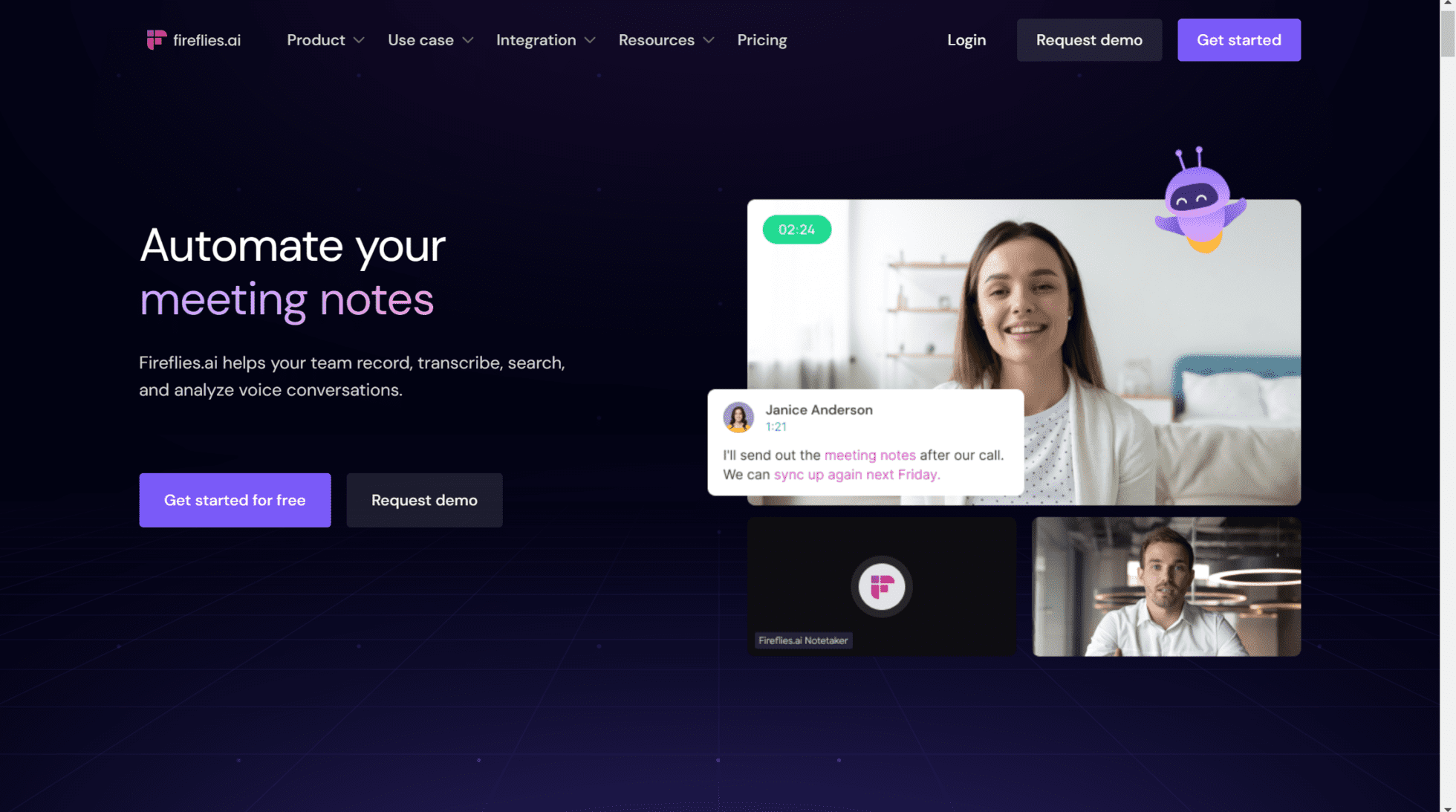
Fireflies is a popular AI meeting assistant known for its selection of integrations and powerful Smart Search capabilities. While it isn’t tailored specifically for Japanese sales orgs like Jamroll or Amptalk, it does offer Japanese transcriptions. It also allows users to find insights across vast amounts of meeting data in seconds.
Where Fireflies really shines is in conversation retrieval. Its Smart Search feature lets users query specific keywords, topics, or even speaker sentiment across thousands of meetings. It’s like searching your inbox but for sales calls. You can instantly pull up all mentions of pricing objections, competitor names, or specific product features across dozens of reps’ calls. This makes Fireflies a favorite for teams that rely heavily on insight mining, competitive tracking, and performance reviews.
Fireflies is similar to the number one Jamroll alternative, tl;dv in many ways. Though it must be said that tl;dv has much more to offer in the way of sales coaching. For a more detailed breakdown, check out our deep dive: tl;dv vs Fireflies.
Why Fireflies Is a Great Jamroll Alternative for Japanese Sales Teams
If your team deals with a large volume of calls, Fireflies helps cut through the noise. Its AI filters, speaker-based tagging, and auto-topic tracking make it easy to find exactly what you need. It doesn’t matter whether it’s an important buyer objection or a missed follow-up opportunity.
Fireflies also syncs with CRMs like HubSpot and Salesforce, and its Zapier integration opens the door to thousands of automation possibilities. That said, Jamroll still has a slight edge when it comes to native Japanese transcription and domestic sales-specific tuning.
However, for companies with an international customer base or cross-functional teams that need to index and recall knowledge fast, Fireflies is a no-brainer. It offers transcriptions in over 100 languages, something that no other Jamroll alternative on this list can match.
What Are Fireflies’ Standout Features?
Fireflies might not be a native Japanese platform, but that doesn’t mean it doesn’t bring its A game. It also doesn’t specialize in sales and you’ll find no deal intelligence or revenue-focused features, but it’s one of the best, most consistent all-rounders you could wish for. Here are some of its best features:
- Smart Search & Filters: Fireflies excels at conversation search. Users can quickly locate the exact moment a prospect asked about pricing or when an objection was raised. For sales leaders reviewing dozens of calls a week, this dramatically cuts down the time needed to find key insights.
- AI-Powered Topic Tagging: Another strong suit is automatic topic tagging. Fireflies detects common sales themes like “next steps,” “budget,” or “timeline” and labels them within the call transcript. This not only makes coaching easier, but also helps sales teams stay organized and focused on follow-ups without needing to rewatch entire meetings.
- Broad Integrations: Fireflies integrates with a wide range of workplace tools including Zoom, Google Meet, Microsoft Teams, Slack, Notion, Asana, HubSpot, Salesforce, and more. This deep connectivity ensures meeting insights flow effortlessly into the platforms your team already uses, enhancing visibility and cross-functional collaboration.
- CRM Syncing: CRM syncing is one of Fireflies’ most helpful sales features. Notes, action items, and summaries can be automatically logged into your CRM, saving reps hours of manual entry each week.
- Language Support: While Fireflies isn’t as finely tuned for Japanese users as Notta or Amptalk, it does offer multilingual transcription and interface options. This makes it usable in Japanese-speaking environments, particularly if your team operates across multiple languages or markets, though the localization may feel more “global” than “native.”
- Sentiment Analysis: As with Jamroll, Fireflies provides sentiment analysis so users can understand the emotional tone behind the words. This allows conversational insights to become even more impactful as the AI can read between the lines.
Jamroll vs Fireflies: Which is Better for Japanese Sales Teams?
Ultimately, choosing between Jamroll and Fireflies boils down to your team’s needs. Do you want deep sales-focused insights or powerful post-call intelligence and automations?
Jamroll offers cutting edge deal intelligence with its specialized features for sales coaching, emotion tracking, and deal forecasting. It’s ideal for teams that need a revenue-focused tool that provides insights into how individual conversations impact deals. Jamroll’s Japanese localization also makes it a stronger option for sales teams based in Japan, where understanding local communication nuances is crucial.
On the other hand, Fireflies excels at conversation search and AI-powered transcription. Its ability to scan through massive amounts of recorded conversations and identify key topics or moments with smart search filters gives teams more flexibility post-call. Its sentiment analysis feature draws parallels with Jamroll’s emotion tracking too.
If your Japanese sales team needs a tool that goes beyond just sales coaching and instead focuses on post-call intelligence, Fireflies offers superior integrations and automation capabilities. However, if your team’s primary goal is to track sales performance, coach reps, and forecast deals, Jamroll’s deal forecasting dashboard will give you more in-depth insights into individual deals and reps.
5. Clova Note — Best for Simple, Accurate Japanese Summarization
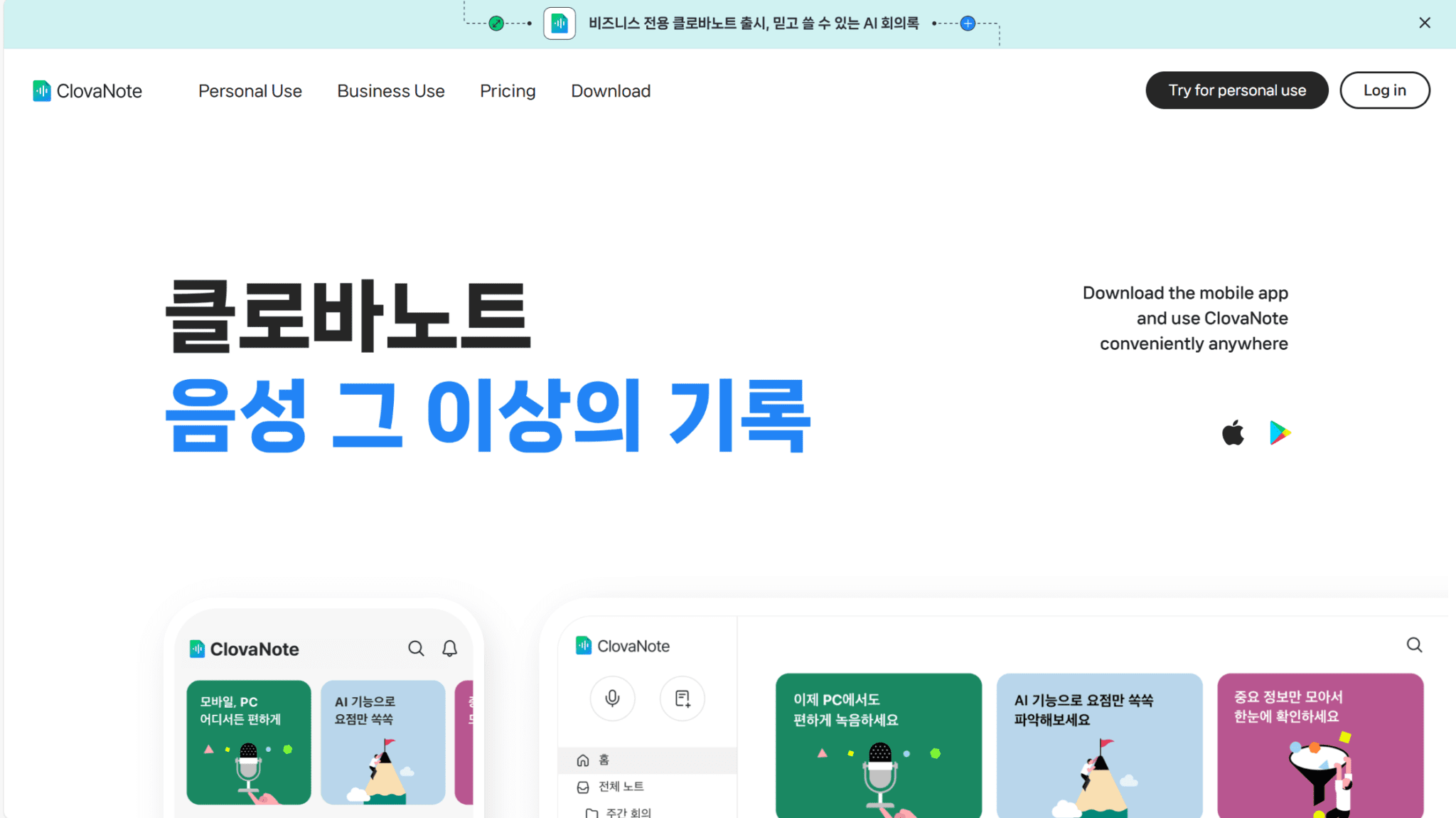
Developed by Naver, the parent company of LINE, Clova Note is a lightweight, intuitive tool designed for users who need quick, reliable transcriptions and summaries. While its primary language is Korean, Clova Note delivers native-level Japanese speech recognition and seamless LINE integration. It’s particularly well-suited for freelancers, small teams, or businesses that rely heavily on LINE for communication.
While Clova Note may not have the enterprise-level features of some competitors, its ease of use and affordability make it an attractive choice for those seeking straightforward transcription and summarization capabilities without the need for extensive setup or customization.
Why Clova Note is Great for Japanese Sales Teams
Clova Note stands out for its top of the range Japanese speech recognition, which provides high accuracy in transcribing conversations in Japanese. This is essential for sales teams operating in Japan, where understanding and capturing nuanced communication can make or break a deal.
With LINE integration, Clova Note allows teams to easily share transcriptions and summaries directly in their LINE messaging platform. This seamless workflow is especially advantageous for businesses that already use LINE for internal communication or client interactions, allowing them to quickly move from a call to action without leaving the app.
The platform’s mobile-first experience ensures that users on the go can still access summaries and transcriptions, making it ideal for sales reps who need quick insights between meetings or while on the move.
While it doesn’t offer much in the way of sales-specific features, its ease of use and simple automations make it a great choice for teams that don’t want to deal with all the bells and whistles that come with more complex tools.
What Are Clova Note’s Standout Features?
Clova Note is designed for simplicity, with key features that help Japanese sales teams operate more efficiently. It doesn’t have any mind-blowing features, but it does provide solid transcription and simple workflow automations:
Japanese Speech Recognition: Clova Note provides highly accurate transcriptions, making it a top choice for teams working in Japan or those handling Japanese-language sales calls. The platform’s speech-to-text engine is specifically fine-tuned for Japanese, ensuring reliable results.
Easy-to-Use Interface: The platform boasts a straightforward, mobile-friendly interface that requires little training. This is particularly helpful for small teams, freelancers, or businesses with less tech-savvy users who want an intuitive solution to summarize and transcribe calls without a steep learning curve.
LINE Integration: The direct integration with LINE is a standout feature, making it easy for teams to share, review, and collaborate on meeting summaries and transcriptions without having to switch between platforms.
Mobile-First Design: Clova Note’s mobile-first experience ensures that users can easily access and review meeting transcriptions and summaries on their smartphones. This is especially useful for sales teams constantly on the go or those working remotely.
Jamroll vs Clova Note: Which is Better for Japanese Sales Teams?
When it comes to selecting a tool for Japanese sales teams, Clova Note and Jamroll cater to different needs.
Jamroll offers granular features geared towards enterprise-level sales management. Its tools for deal intelligence, sales coaching, and forecasting make it ideal for large sales teams focused on tracking performance and driving revenue. However, Clova Note is designed to meet the needs of smaller teams or individuals looking for a simple and cost-effective solution for transcription and summarization, particularly for those who rely heavily on LINE for communication.
If your team’s priority is sales and revenue, Jamroll is the better option. However, if your team needs quick, on-hand transcription with a focus on Japanese speech recognition, Clova Note offers an excellent and affordable alternative.
What’s the Best Jamroll Alternative for Your Business?
Choosing the right Jamroll alternative depends heavily on your team’s specific needs and use cases. If you’re a sales-focused organization looking for advanced tools to manage performance, streamline coaching, and track deals, Amptalk or tl;dv are great choices. Both platforms are tailored for sales teams, with Amptalk offering deep localization for Japanese businesses and tl;dv providing versatile features that extend beyond sales.
For teams focused on recruitment, tl;dv excels due to its powerful AI summaries, customizable workflows, and integration with various CRMs, making it an excellent choice for managing interviews and tracking candidates over multiple meetings.
If your team requires a platform with strong Japanese-first UI and support, Clova Note, Amptalk, and Notta all provide localized interfaces that make them well-suited for Japanese-speaking users and businesses. While tl;dv and Fireflies can both cater to Japanese audiences, neither are truly Japanese-first.
Ultimately, the best Jamroll alternative will depend on whether your focus is on advanced sales features, recruitment, or Japanese-first UI.
FAQs About Jamroll and Its Alternatives
What is Jamroll, and how does it help sales teams?
Jamroll is a sales-focused platform designed to assist teams with transcription, meeting summaries, and deal intelligence. It provides features such as AI-generated notes, emotion-tracking, and deal forecasting, helping sales teams streamline their workflows, capture key insights from calls, and stay aligned on critical actions.
Its key strength is in its ability to transcribe and analyze sales conversations in native Japanese, making it a preferred tool for Japanese sales organizations.
How much does Jamroll cost?
As of now, Jamroll does not publicly list its pricing on its official website. This suggests that the platform may operate on a custom pricing model, often typical for enterprise-focused tools. Such models usually require potential customers to contact Jamroll directly for a personalized quote based on specific needs and team sizes.
Is Jamroll suitable for non-sales teams or cross-departmental collaboration?
While Jamroll is primarily focused on sales, it may not be the best option for non-sales or cross-departmental use.
Its features, such as deal intelligence and revenue forecasting, are specifically tailored to sales teams. For teams in other departments, or those looking for a more versatile tool, platforms like tl;dv offer greater flexibility and a broader suite of features that support different use cases beyond sales.
Can Jamroll integrate with other tools or CRMs?
Jamroll has a limited set of known integrations, and its integrations with other tools are not as extensively documented as some competitors like tl;dv or Fireflies.
While it supports some basic CRM functionality and sales tools, it may lack the seamless integration capabilities offered by alternatives, which often support a broader range of platforms like HubSpot, Salesforce, and Zoom.
How does Jamroll handle Japanese transcription and localization?
Jamroll is built specifically with Japanese language users in mind, offering accurate and localized transcription services. This makes it an excellent choice for Japanese-speaking sales teams. However, its limited language support is a massive drawback for international teams or businesses that require multilingual transcription.
Can Jamroll help with coaching and training sales reps?
Yes, Jamroll offers features like coaching insights and emotion-tracking to help sales managers train and mentor their reps. While it doesn’t have the same level of dynamic, real-time coaching support as some competitors (e.g., Amptalk), it still provides valuable tools for improving sales team performance, such as AI-driven suggestions for improving sales calls.
What are the main alternatives to Jamroll for sales teams?
For sales teams, the best alternatives to Jamroll are Amptalk and tl;dv. Amptalk is ideal for Japanese sales organizations due to its deep localization, strong coaching support, and CRM compatibility. tl;dv, on the other hand, offers flexibility beyond sales, with features for cross-team collaboration, custom AI summaries, and multi-meeting reports. It also integrates with popular CRMs like HubSpot and Salesforce, making it a versatile choice for teams across departments.
Which alternative is best for recruitment teams?
For recruitment-focused organizations, tl;dv is the top alternative. Its customizable workflows, AI-powered summaries, and CRM syncing capabilities make it a great fit for managing interviews, tracking candidates, and simplifying the hiring process.
With tl;dv, recruitment teams can easily review past interview highlights and ensure better decision-making across multiple candidates.
Which tool is ideal for quick and simple transcription?
For those in need of a simple, mobile-first transcription solution, both Clova Note and Notta are excellent options. These platforms offer easy-to-use interfaces and provide fast transcription services, making them great for on-the-go use, especially for freelancers or small teams.
While Clova Note integrates with LINE for a more localized Japanese experience, Notta offers support for multiple languages and is designed to simplify transcription on mobile devices.
Which alternatives offer the best Japanese-first UI and support?
If you’re looking for platforms with strong Japanese-first UI and support, Clova Note, Amptalk, and Notta stand out. These tools provide high-quality localization and features tailored to Japanese language users, making them a natural fit for teams working in Japan or with Japanese-speaking clients.
